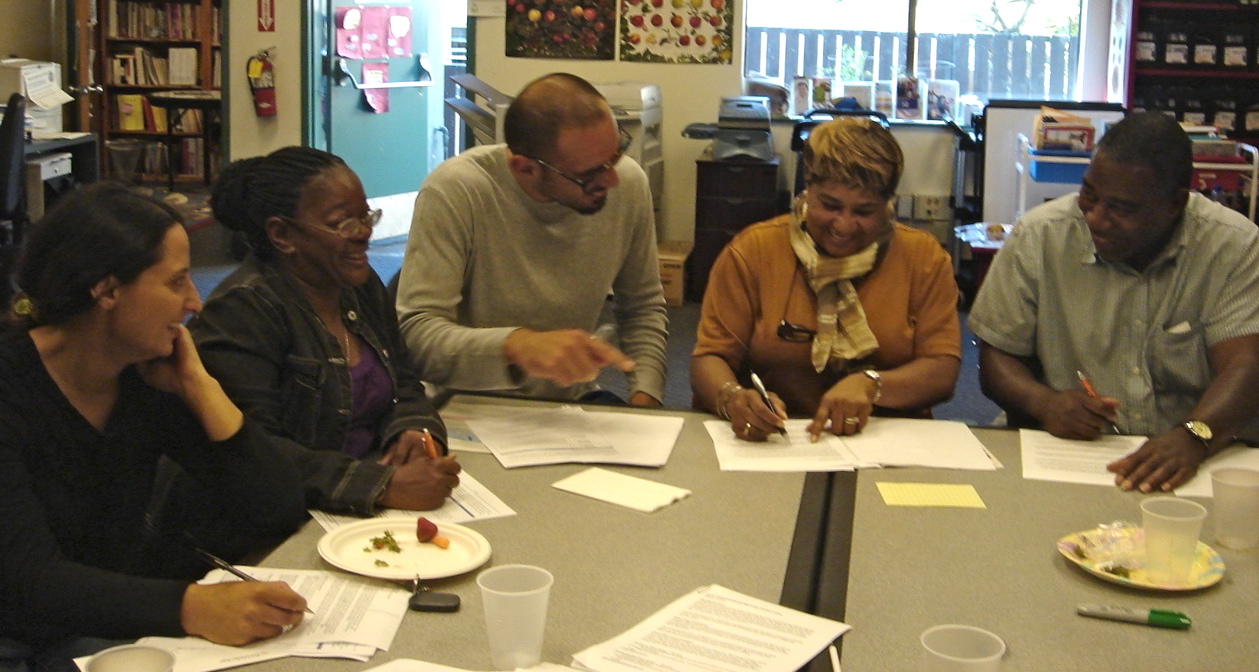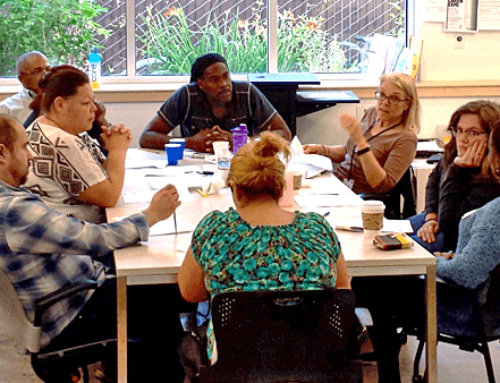 This is not a test.
This is not a test.
Before joining Common Knowledge, I served as a high school special education teacher. My students were caring, intelligent and incredibly hard working, but nearly all felt anxious when it came time to take tests. At Common Knowledge, we believe that voting shouldn’t feel like a test.
Even so, I know that many voters feel overwhelmed when they go to the polls. Between voting for president, Senate, House of Representatives, statewide offices, city councils and local ballot measures, voters have a lot on their plates. This year in particular, the ballot is especially jam-packed with statewide measures.
From school funding to plastic bags, this November’s ballot propositions cover a wide range of topics and issues. This year — with 17 statewide propositions included on the ballot — voters need all the help they can get. Enter the Easy Voter Guide.

Photo by Josh Davis
This was my first season working on the guide and it was a fascinating experience. Founded by Common Knowledge with support from the California State Library, the Easy Voter Guide helps make complex propositions accessible to busy voters and new voters alike. The project is now hosted by the League of Women Voters and is published in English, Spanish, Vietnamese, Chinese and Korean.
Since its creation in 1994, the guide has helped countless California residents make an informed choice come Election Day. Being able to assist with such an important project was an honor and an education.
Explaining this year’s ballot measures proved to be no easy task, however.
In July and August, the Common Knowledge team started work on what would become this year’s Easy Voter Guide. After writing up very early drafts descriptions of the propositions, we conducted three feedback sessions with adult literacy students and English-language learners. This community design process is an integral part of the guide’s creation. The community members we worked with provided detailed, thoughtful feedback, which helped make the guide easy to read and relevant to voters. 
We also spent several hours ensuring the guide would provide accurate information to voters in a nonpartisan way. I poured over the text of each proposition, looking for areas that might cause confusion for voters. Particular attention was also paid to the arguments “for” and “against” each proposition. Several arguments ended up being challenged in court.
By mid-July, we had several pages of legal judgments to read that also informed the guide’s final position statements. Before sending the guide to the printer, we also reviewed all texts with the League of Women Voters and the Legislative Analysts’ Office. As with every guide, this year’s version would not have been possible without extensive community input, hours of research and careful editing.
If you’re looking for help ahead of Voting Day, pick up a copy of the Easy Voter Guide at your local library or download a PDF today. Or use your phone to read our summaries of the propositions at Voter’s Edge, a production of Map Light and the League of Women Voters’ California Education Fund.
The more prepared and comfortable we are with the issues, the less voting feels like a test. And remember, at least no one will be grading your answers.





Leave A Comment
You must be logged in to post a comment.